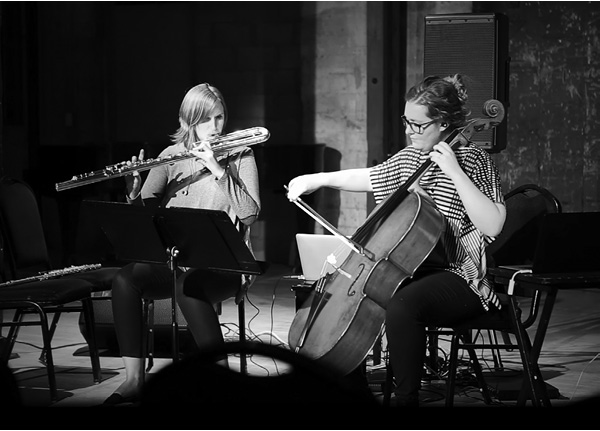
MACHAUT + RAUSCHEN
first performed on November 18, 2015
ArtShare, Los Angeles, CA
performed once in 2015
AUTODUPLICITY / RACHEL BEETZ, JENNIFER BEWERSE
San Diego, CA / Los Angeles, CA
840970503r840970503a840970503c840970503h840970503e840970503l840970503b840970503e840970503e840970503t840970503z840970503@840970503g840970503m840970503a840970503i840970503l840970503.840970503c840970503o840970503m840970503 840970503/840970503 840970503j840970503b840970503e840970503w840970503e840970503r840970503s840970503e840970503@840970503g840970503m840970503a840970503i840970503l840970503.840970503c840970503o840970503m
autoduplicity.blogspot.com
MACHAUT + RAUSCHEN
AUTODUPLICITY / RACHEL BEETZ, JENNIFER BEWERSE
Autoduplicity presented “Machaut + Rauschen” on November 18, 2015 at Artshare in Los Angeles, CA. The 50 minute musical performance juxtaposed Guillaume de Machaut’s seven hundred year old ballade, “Dame, ne regardez pas” with several of Peter Ablinger’s “Instrumente und Rauschen” and premiered Ablinger’s “Kreuze” for solo cello and electronics.
The chronological extremes of Machaut and Ablinger allowed Autoduplicity to question dualities that are often presented as binary poles. Dualities of quiet and loud, low and high, and simple and complex all surfaced and engaged issues of basic audibility.
Autoduplicity arranged six versions of the Machaut ballade that presented it in its barest form and deconstructed it into its most basic elements. The six versions were a common practice arrangement for flute and cello, a pre-recorded and heavily altered tape piece that disembodied the work from the performers, a version during which noise bands of the ballade’s frequency range enveloped the melody as played by the flute and cello, an open score arrangement where fragments of the ballade were performed in spontaneous sequences, an abstract arrangement that distilled the ballade into a microtonal improvisation around the ballade’s central pitch, and a version that removed the ballade’s rhythms to highlight the harmonies of the piece against a sustaining drone.
In the concert, performed without pause, these arrangements of Machaut’s ballade were put into dialogue with many of Peter Ablinger’s Rauschen (noise) pieces. In these pieces bands of noise are used as a tool for audibility or inaudibility. The concert program included “Piccolo und Rauschen,” “WEISS/WEISSLICH 17d: Flöte und Rauschen,” “Das Wirkliche als Vorgestelltes (The Real As Imaginary),” “Kyrie after Machaut,” and the world premiere of “WEISS/WEISSLICH 17k: Violoncello und Rauschen (‘Kreuze’).”
Leaping from the simple purity of Machaut’s single melody to the “everything always” of white noise, Autoduplicity’s “Machaut + Rauschen” explored the hidden complexity in simple sounds and hidden sounds within masses of complex noise. Listening at these extremes revealed how deceptive the very ideas of simple or complex can be by recontextualizing each within the other’s scale and trapping their definitions in infinite loop.